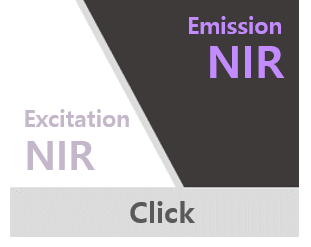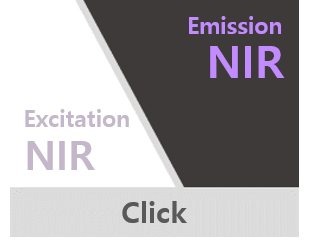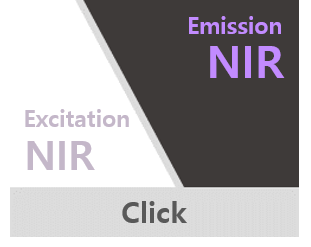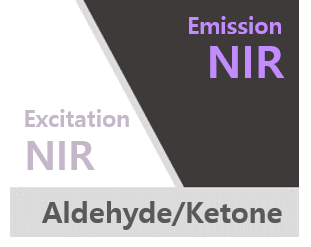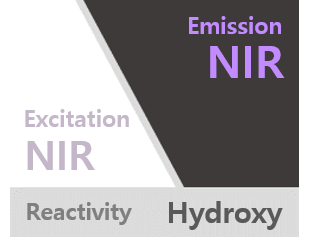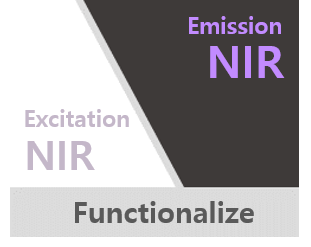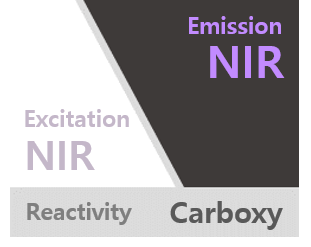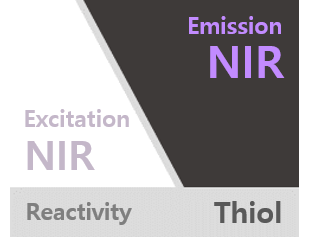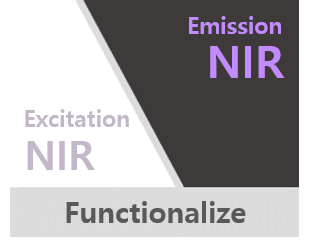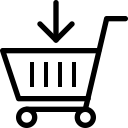
ICG Thiol
| PACKING UNIT | price |
Lead time |
|---|---|---|
| 1 mg | $281.00 | |
| 5 mg | $1,004.00 | |
| 25 mg | $3,736.00 |
Description
ICG Thiol is an inactive form of near infrared (NIR) fluorescent dye and used to generate a stable fluorescence signal in bioimaging. The thiol is attached to ICG fluorophore trough a spacer. NIR fluorescence allows to observe the deep image from the surface of skin and being utilized in a wide range of research fields. The maxima of Ex/Em values are at 785/812 nm. ICG might be excited using 750-800 nm laser line or LED and displays excellent optical property. ICG thiol can be labeled to biomolecules through a disulfide bond formation with thiol of cysteine residue or can be utilized as a reference standard for dye-conjugates.
Citation & Reference
1. Wu Y, Miniature NIR-II nanoprobes for active‐targeted phototheranostics of brain tumors. Advanced Healthcare Materials. 2022 Nov 7;11(23).
2. Choi J, Development of intraoperative near-infrared fluorescence imaging system using a dual-CMOS single camera. Sensors. 2022 Jul 26;22(15):5597.
3. Luo X, Metabolizable near-infrared-II nanoprobes for dynamic imaging of deep-seated tumor-associated macrophages in pancreatic cancer. ACS Nano. 2021 Jun 1;15(6):10010–24.
4. Tsujimoto A, Different hydration states and passive tumor targeting ability of polyethylene glycol-modified dendrimers with high and low peg density. Materials Science and Engineering: C. 2021 Jul;126:112159.
5. Lee A-J, Application of elastin-like biopolymer-conjugated C-peptide hydrogel for systemic long-term delivery against diabetic aortic dysfunction. Acta Biomaterialia. 2020 Dec;118:32–43.
6. On KC, Tumor-targeting glycol chitosan nanoparticles for image-guided surgery of rabbit orthotopic VX2 lung cancer. Pharmaceutics. 2020 Jul 3;12(7):621.
7. Chang KH, Comparison of salbutamol delivery efficiency for jet versus mesh nebulizer using mice. Pharmaceutics. 2019 Apr 19;11(4):192.
8. Cherukula K, “navigate-dock-activate” anti-tumor strategy: Tumor Micromilieu charge-switchable, hierarchically activated nanoplatform with ultrarapid tumor-tropic accumulation for Trackable Photothermal/Chemotherapy. Theranostics. 2019;9(9):2505–25.
9. Bell G, Functionalised Iron Oxide Nanoparticles for multimodal optoacoustic and Magnetic Resonance Imaging. Journal of Materials Chemistry B. 2019;7(13):2212–9.
10. Aaron M. Mohs. An integrated widefield imaging and spectroscopy system for contrast-enhanced, image-guided resection of tumors. IEEE Trans Biomed Eng 62.5 (2015): 1416-24.
11. Mohammed Hassan. Near Infrared Fluorescence Imaging with ICG in TECAB Surgery Using the da Vinci Si Surgical System in a Canine Model. J Card Surg 27.2 (2012): 158-162.
12. Mitsuharu Miwa. The Principle of ICG Fluorescence Method. The Open Surgical Oncology Journal 2 (2010): 26-28.
OPTION
Total

 log
log My
My Contact
Contact

